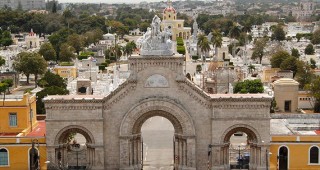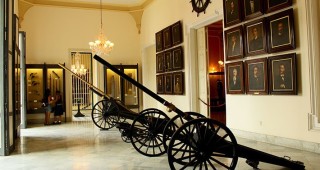
The early city was formally founded in 1519 on the northeast side of what would soon be laid out as Plaza de la Iglesia—named for the simple church that stood here until 1741, when it was destroyed following the explosion of the HMS Invicible in the harbor (the mast landed on the church). The square had by then already been cobbled, although it was renamed Plaza de Armas—essentially, “Parade Ground”—and became the main administrative center of the city.
In colonial times, the square was the site of military parades, musical concerts and formal evening promenades, and it maintained its political and administrative role until the mid-20th century. It is surrounded by buildings spanning four centuries.
In the center of the square is Parque Céspedes, pinned by a white marble statue of Carlos Manuel de Céspedes, initiator of the Cuban wars of independence and Father of the Homeland. Surrounded by royal palms and ceiba trees, the statue was made by Cuban artist Sergio López Mesa and replaced a statue of Spanish King Fernando VII, installed in 1834 when Miguel Tacón commissioned a remodeling that shaped the square we see today. (The original statue of Fernando VII stands in the loggia of the Palacio de los Capitanes Generales, on the square’s west side; he holds in his hand a scroll that when seen from the side gives the impression that he’s holding an erect penis.)
Note that the street on the west side of the plaza is a parquet of wood. This, supposedly so that passing carriages would not disturb the governor’s sleep. Originally of long-lasting ironwood, the street was recently relaid with blocks of inferior quality and is deteriorated. Immeditely south of this street, at the plaza’s southwest corner, 17th-century school for orphan girls is now a popular bar-restaurant: La Mina.














 Eclectic
Eclectic





